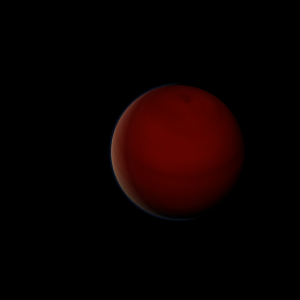|
|
Space Astro
|
Info for exoplanet "Kalsiar"
| Scientific (actual) data |
|---|
| Name | HD 117618 b |
| Planet status | Confirmed |
| Mass sini | 0.174 |
| Orbital period | 25.8 |
| Semi major axis | 0.18 |
| Orbit eccentricity | 0.15 |
| Angular distance | 0.004632 |
| Discovered | 2004 |
| Updated | 2019-03-05 |
| Omega | 289 |
| Tperi | 2450830 |
| K | 10.9 |
| Publication | Published in a refereed paper |
| Detection type | Radial Velocity |
| Mass measurement type | Radial Velocity |
| Star name | HD 117618 |
| Right ascension | 203.1° |
| Declination | -47.27° |
| Mag v | 7.18 |
| Star distance | 38 |
| Star metallicity | 0.04 |
| Star mass | 1.05 |
| Star radius | 1.19 |
| Star sp type | G2V |
| Star age | 3.88 |
| Star temperature | 5861 |
| Wikipedia article | HD 117618 b |
Back
| |
| Fictional info (?) |
|---|
| Suggested name | Kalsiar |
| Planet type | Planet |
| The smooth Borealis basin in the northern hemisphere covers 22 percent of the planet and may be a giant impact feature. |
| Atmosphere | Oxygen | 59% |
| Methane | 40% |
| Neon | 0.029% |
| Atmospheric pressure | 0.7 bar |
 |
| No known satellites |
| Google search for Kalsiar |
|
Website by Joachim Michaelis
|
|
|
|